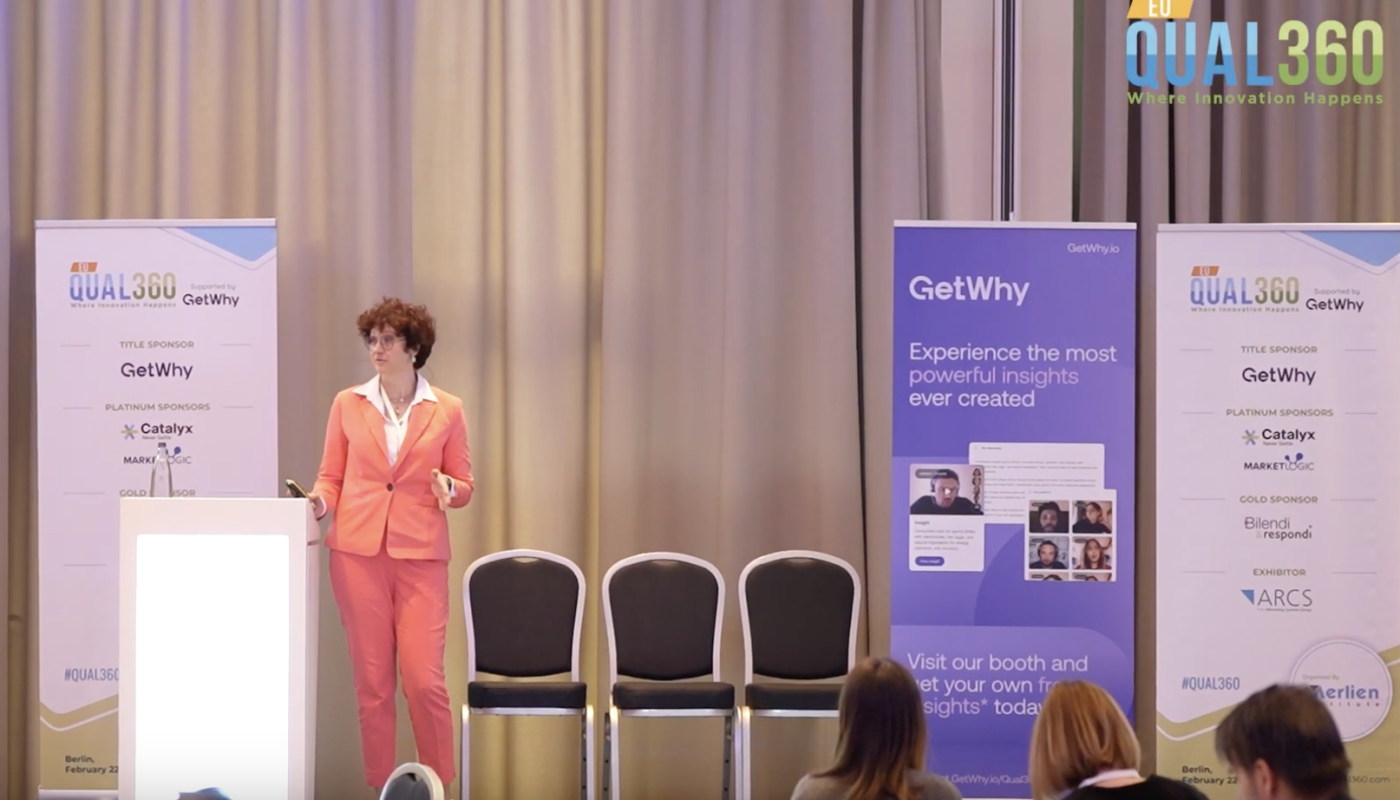At Merlien, we are proud to feature new and innovative speakers at each event. Earlier this year, we were excited to welcome Vesna Hajnsek, Senior Manager Global Intelligence at Swarovski at Qual360 Europe 2024. Vesna gave one of the most talked about presentations – and to celebrate this we are making her presentation available here for the entire MR community.
The only way to win consumers is to know them
You can find all MRMW conference recordings for free in our video section!
Video transcript below (This is an AI generated summary. There may be inaccuracies.)
In this video titled “Swarovski: The only way to win with consumers is to know them – bridging the gap between our ideas and reality,” Vesna Hajnsek discusses Swarovski’s approach to understanding consumers. Despite having extensive data on consumers, there was a gap between the different perceptions of customers held by various teams. Swarovski partnered with human8 to create a five-step program called “Ignite” to bridge this gap. The team conducted in-depth interviews and research to identify consumer needs, preferences, and attitudes towards jewelry. They also engaged consumers in various countries to collect valuable data.
Vesna emphasized the importance of being part of the analysis process and maintaining open communication with moderators to ensure high-quality results. The research team found that giving them more time to reflect on ideas led to stronger results. Consumer analysis and engagement were crucial for Swarovski to create empathy and understanding between the business and consumers. The team also learned the importance of effective communication and using consumer-friendly language during consumer events. However, Vesna acknowledges that while AI can facilitate some aspects of consumer engagement, it cannot fully replace the human touch, particularly in exploring personal topics like jewelry and personal style.
Vesna Hajnsek also talks about the challenge of connecting data points about consumers with a deeper understanding of who they are and what inspires them. Despite having extensive data on consumers’ demographics, jewelry preferences, and spending habits, the company’s creatives, sales teams, and central teams had different perceptions of their customers.
The sales team required a simple training tool to connect with consumers quickly, while the creative teams needed inspiration based on consumers’ daily lives and aspirations. To bridge this gap, Swarovski created the five-step program called “Ignite” to gain a better understanding of consumers’ context and closeness. The program involved engaging with various stakeholders, including design studios, creative studios, PR, and product development, to ensure a unified vision of their customers.
It is important to identify consumer needs and preferences through extensive research. Vesna’s team conducted in-depth interviews with sales teams and customers, asking questions about their current materials, desired improvements, and expectations for new products. This information was crucial in identifying gaps and exploring potential topics for further research. The team also engaged respondents in various countries, collecting valuable data on consumer attitudes towards jewelry, gifting, and personal style.
To ensure high-quality results, Swarovski made sure that team members who spoke the local language were present to monitor and ask questions during the research process. Additionally, they set clear expectations for the minimum effort required from respondents, such as daily outfit and jewelry photos. By maintaining open communication with moderators and aligning on minimal requirements with agency partners, Swarovski was able to obtain rich and valuable consumer insights before the AI boom.
Swarovski’s market research team analyzed thousands of photos, videos, and posts to understand their consumers’ preferences, homes, special occasions, and jewelry styles. Vesna emphasizes the importance of being part of the analysis process and engaging with the team to ensure that the business stays relevant and differentiated. The team also found that giving them more time to reflect on ideas led to stronger and more visual results that catered to various stakeholders. The ultimate goal was to create empathy and understanding between the business and the consumers to make better decisions. The team used a typing tool exercise to identify consumer segments and grounded the conversation in the consumers’ predominant styles.
During the presentation, Vesna shares her experience of connecting with consumers in a consumer museum day. The team found that preparing visual materials, interactive sessions, and training their team to communicate effectively with consumers were essential for a successful event. They also learned that using business abbreviations and speaking in a way that consumers could understand was crucial. Consumers expressed their preferences for prints, timeless and classic pieces, investment jewelry, and colorful accessories. Swarovski’s focus on affordable yet sparkling pieces resonated with consumers, making them feel they could afford to “sparkle” at an accessible price point. Consumers appreciated Swarovski’s timeless and classic pieces, which they saw as an investment, and were drawn to reversible and unique designs.
The presented case study higlighted the results of a project aimed at understanding consumers better. The team conducted interviews and research to gain insights into the consumers’ lives, homes, and shopping habits. They discovered that their preconceived ideas of consumers were often different from reality. To bridge this gap, they created materials such as infographics and conducted training for creatives, sales staff, and other teams.
The outcome was a more accurate representation of consumers, leading to better design and communication. Consumer ambassadors emerged, allowing teams to make informed decisions based on consumer insights rather than relying on the insights team to police consumer behavior. The project resulted in a clear picture of the end result and its use, with a good partner playing a crucial role in the process. The speaker emphasizes the importance of clarity, managing expectations, and making the process fun.
One finding from the project was that it is important to give ideas time to develop and the value of creating empathy and closeness within a team. The process, which took between 8 to 12 weeks, involved various stakeholders in the business, some of whom were initially resistant to the changes. The sales team and customer experience team were eager to adopt the new tools, while the creative teams were more reluctant due to fears of being told what to do.
However, as the process continued, even the creative teams found it helpful and became super fans of the approach. If the speaker were to conduct the process today, she might consider using AI tools to sort through the vast amount of pictures and materials involved.
Vesna also touches on the limitations of using AI in exploring certain topics with consumers, particularly those related to personal style and jewelry. She acknowledges that while AI can facilitate some aspects of consumer engagement, it cannot fully replace the human touch.
Vesna shares an example of a research project where participants were hesitant to show their jewelry, considering it a personal and private matter. The moderators had to coax and reassure participants to share their jewelry collections. She concludes that while a mixed methodology might have been used, it could not have fully replicated the value of human interaction in this context.
Vesna will be back at MRMW Europe this year, together with incredible speakers from Tik Tok, Nestle, Salomon, Ericsson, Burger King, Givaudan, BAT, Warner Bros, Bank Millenium, Philips and many more! Check out the full agenda and speakers at https://eu.mrmw.net/










 by
by 



